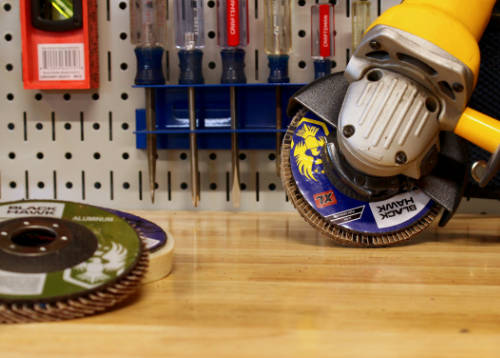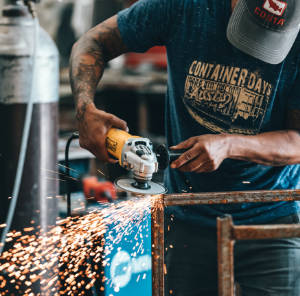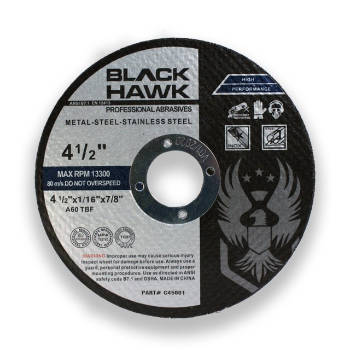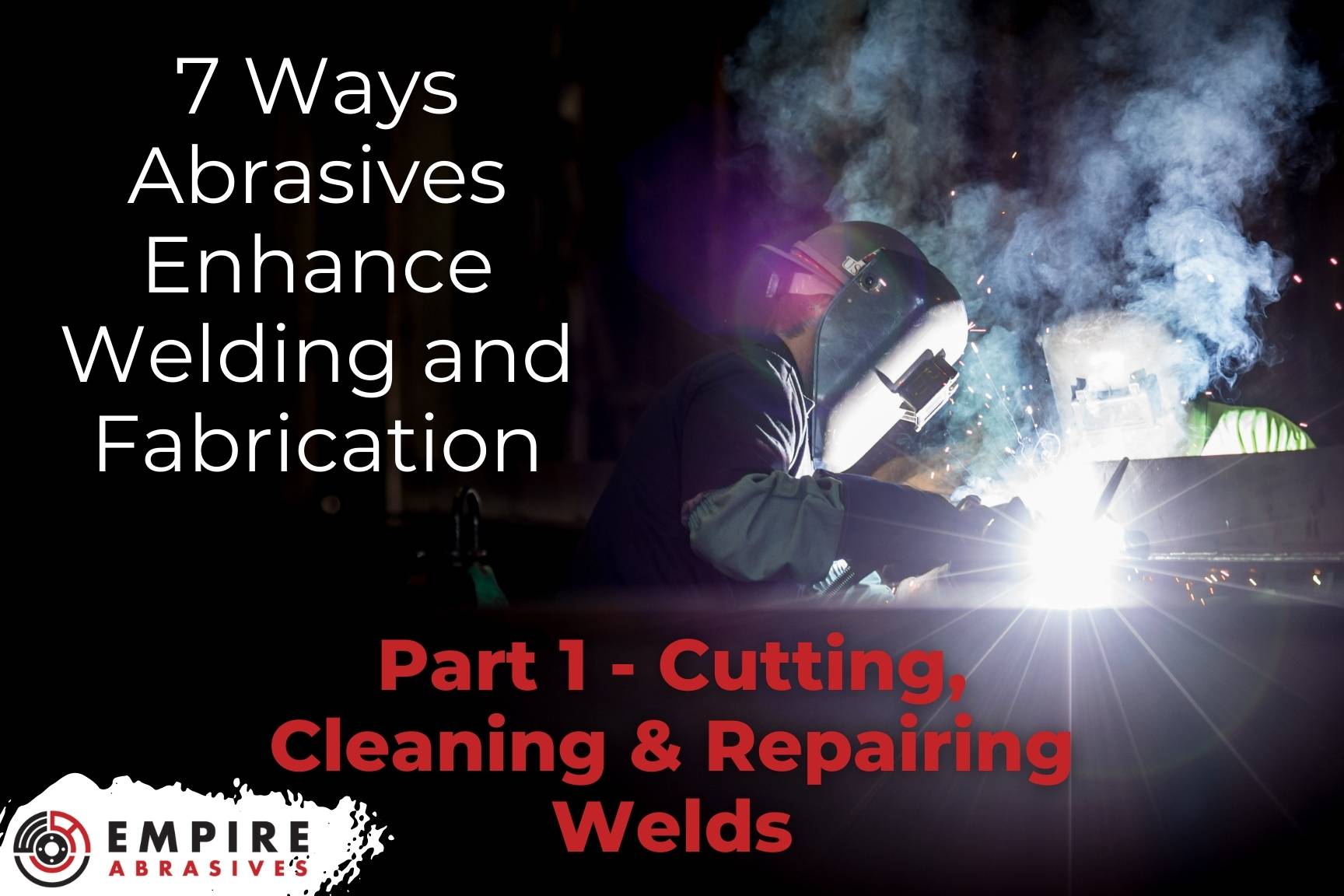
Abrasives are used throughout the fabrication and welding processes to properly prepare surfaces to assure solid welds are made, repair bad welds, and refine the appearance of finished welds. If you are interested in leveraging the power of abrasives in fabrication and welding, then read on as we try to answer the following questions:
- Why are abrasives and grinding so important in fabrication and welding?
- What are the best types of abrasives for each step in the fabrication and welding process?
- How do I effectively and safely use these abrasive products in these fabrication and welding steps?
- How do abrasives and grinding impact weld and joining costs?
- How do abrasives save money compared to alternative methods?
- Where can I find the abrasive products I need?
Skip Ahead:
PART 1 - Abrasives for Welding & Fabrication Part 1 - Cutting, Cleaning and Repairing Welds
- Abrasives for Metal Fabrication - Cutting and Notching
- Weld Joint Preparation - Cleaning & Beveling
- Weld Repairs and Fixing Mistakes
- Abrasive Recommendation for New Welders
PART 2 - Abrasives for Weld Grinding Cleaning Buffing & Surface Prep
- Weld Finishing – Weld Cleaning, Grinding, Deburring, Blending and Smoothing
- Grinding Weld Corners or Fillet Welds and Hard to Reach Welds
- Abrasives for Buffing and Polishing
- Abrasives for Coating Surface Preparation
- Recommended Abrasive Products for Welding
1. Abrasives for Metal Fabrication - Cutting and Notching
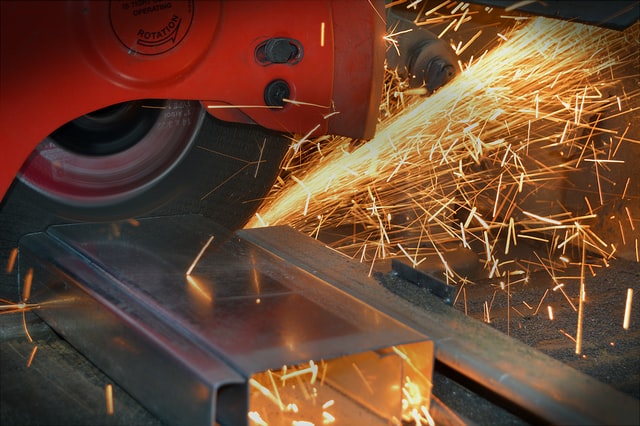
Before parts can be welded together, the individual parts need to be fabricated. If the components do not fit together properly, then gaps and misalignment are likely to occur at the joints to be welded. Getting better fit up relies on accurately forming, cutting and shaping stock materials into parts with the correct shapes and dimensions.
While thin tube stock and softer metals can be cut with shears, snips and reciprocating saw blades, abrasive cut off wheels and metal saw blades are useful tools for quickly cutting and shaping components for a welded assembly – especially for harder metals like alloy steels and thicker metal pieces.
A chop saw with the proper abrasive wheel such as a 14" chop saw cutting wheel can rapidly cut to length bar, tube, pipe, and other metal stock. Flat cut-off wheels mounted such as 4 1/2“ type 1 flat cutting discs on angle grinders or even 7" circular saw cutting discs on a rotary power saw are excellent for cutting and shaping sheet metal, metal plate, and other stock shapes.
Shaping and grinding contours and more intricate forms can be accomplished with depressed center wheels or hubbed wheels such as a 7" type 27 depressed center grinding disc or a 4 1/2“ type 27 hubbed cutting and grinding disc.
Grit flap discs and fiber discs mounted on angle grinders are also useful in shaping and removing sharp edges or burrs after cutting, which is recommended practice to avoid cutting your hands while handling and working on the metal parts.
Metal can also be cut quickly with carbon arc gouging or plasma cutting, but these thermal cutting methods result in a rougher, oxidized edge, which can require additional grinding and surface preparation before welding.
When the ends of tubes or pipes need to be welded together, an angled miter cut of the end is required. Tubing and pipe miter cuts can be made with a chop saw, angle grinder or using reciprocating saw blades.
When the end of one tube is to be welded to the side of another tube, side notching and fish mouth end cuts are required. Holes saws, end mills, plasma cutters and abrasive belts can be used for tube notching or tube coping to create fish mouths. Hole saw tube notchers are a relatively inexpensive suitable for smaller jobs. Hole saws for tube notching as well as drilling large hole steel sheets or plates are available in a wide range of diameters.
While abrasive notchers or abrasive belt tube notching machines can cost thousands of dollars, the productivity increase may pay for the machine at shops routinely making frames, tubular furniture, or bicycles from square and round tube stock.
2. Abrasives for Weld Joint Preparation - Cleaning & Beveling
Joint Surface Cleaning
Joining components by any non-mechanical methods such as adhesive bonding, brazing, soldering or welding requires a clean surface to produce a strong bond.
Oxide scale, rust, oil, grease, coatings, paint, dirt, and other debris will more than likely contaminate a weld resulting in a weak joint. In fact, several manufacturers sell stop-offs, anti-splatter coatings or masking compounds, which can be sprayed or coated onto specific areas of a part to prevent adhesives, solders, brazes or weld metals from sticking to the workpiece.
Metal surfaces can be cleaned using parts washers, pressure washers, acid pickling baths, solvent baths, and abrasives. These options do have their limits though.
- Pressure washer and detergent baths might dissolve oil, grease and dirt, but not paint, rust and organic coatings.
- Solvent or stripping baths can remove paint, grease, and organic coatings, but not oxide scale or rust.
- Acid pickling baths can remove rust, oxides, and mill scale, but they will stumble removing organic coatings and can embrittle some higher carbon steels.
Washing methods have several drawbacks including the health hazards of handling these chemicals as well as environmental regulations restricting purchases and disposal of spent cleaning solutions. Home shops might find the chemicals difficult to obtain and uneconomical. If a parts washer or solvent bath is used, then only parts small enough to fit in the tank can be welded.
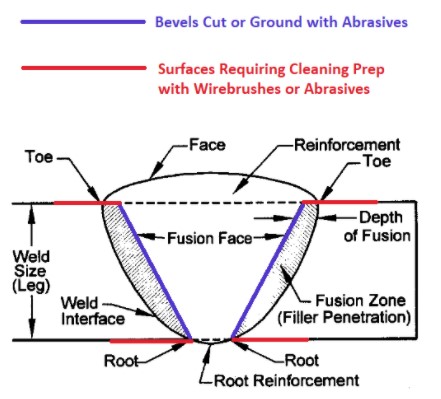
Abrasive cleaning and surface preparation methods such as abrasive blasting, grinding, and wire brushing provide several advantages over chemical methods including:
- Can remove almost any type of surface contamination
- Can handle any size part
- Portable to remote sites
- Lower cost of equipment and consumables
- Consumables are easily available, safe to use and disposal is not regulated
A wide variety of abrasives are useful for cleaning and surface preparation before welding including abrasive fiber discs, abrasive belts, wire brushes, flap discs, and bonded grinding discs.
Joint Shaping and Beveling
In addition to cleaning, abrasives can prepare the geometry at workpieces to be joined.
For instance, thick bar or plate and heavy walled pipe are welded in the field with multiple passes because the heat input and material input would be too high for a single pass. Extensive distortion and warping would occur with a massive single weld on a project with heavy sections. One or more of the joint edges of the workpieces need to be beveled at an angle to allow the electrode to access and deposit material at the root of the weld.
In multi-pass welding, the weld joint is formed through a series of welds passes, which slowly fills in and closes the triangular weld gap. Alternating weld passes from the front to the back side plate will minimize distortion. Depressed center grinding wheels, flaps discs, abrasive belts and fiber discs grind the edge of the workpiece to produce a beveled edge. Another option is using a cutting disc or cut-off wheel to cut away the edge at an angle to produce the bevel or bevels.
Grinding Between Weld Passes
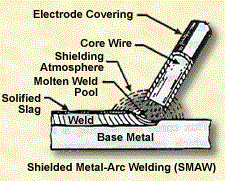
During welding, the flux in the core of weld wire or the flux coating on welding electrode sticks generates a molten slag, which protects the weld metal from oxidation.
On pipelines, pressure vessels and thick section welds requiring structural integrity, interpass grinding or grinding between passes is used to remove the oxidation, slag and defects. If your project is more decorative in nature and does not have to support any loads, then you may not have to be concerned with grinding between passes.
When grinding a weld with just two passes or a front and back weld, the back root of the first or front weld is back chipped, back-gouged or back-ground to provide a clean surface for the second weld pass. The back root surface of a weld is not protected from oxidation by a flux or slag covering, so material needs to be removed before applying the second back weld.
When welding aluminum, a carbide tipped saw blade can be used to back “chip”* or back cut because aluminum is so soft. An abrasive product that can reach down into a weld cavity to grind out material between passes is required such as hubbed or depressed center grinding wheels, carbide burrs, corner grinding flap discs, and specialty abrasives such as cartridge rolls, cross pads or spiral bands.
*Chipping is a weld cleaning process using a weld hammer (chipping hammer) or chisel. Air chippers are pneumatic chipping hammers that provide a powered method to chip welds. Pneumatic chipping and gouging typically require additional grinding, so you might as well just use grinding alone.
3. Abrasives for Weld Repairs and Fixing Mistakes
In many cases, slight gaps and misalignment at a joint set up for welding can be accommodated during the welding process. If the misshapen or oversized part produces overly large gaps or misfits parts at the joint, then the parts may need to be trimmed, reshaped or corrected with additional abrasive cutting or sawing. The best practice is to fix any oversized parts, replace or adjust undersize parts and assure proper gaps and good alignment of the parts before welding starts.
Severe joint misalignment, poor joint fit and excessive heat input during welding can result in a distorted welded assembly or project.
Distortion may require welds joints to be cut, ground and then repositioned and rewelded. Excessive distortion during welding can cause welds on the project to break. Welds can also crack during service due to overstressing. Flat cut-off wheels mounted such as 4 1/2“ type 1 flat cutting discs or even 7" circular saw cutting discs can be used to cut apart a welded joint for repositioning and rewelding.
Large cracks, pores, burn-throughs, inclusions, and other welding defects need to be repaired for structural or appearance reasons.
In most alloys, if the defect is only in one small portion of the weld, then just those regions can be ground out and rewelded. In other cases, a weld joint may need to be cut through and rewelded to correct distortions or warping due to overheating during welding.
If there are defects along the entire length of the weld, then it might be more efficient to cut the joint apart and grind away metal to re-prep the surfaces or start again with new parts.
Coated abrasive discs or flap discs can be used to flatten a weld, but an abrasive product that can cut or grind down into the weld zone is required such as hubbed or depressed center grinding wheels, carbide burrs or abrasive cutting disc wheels. An abrasive cutting disc in a circular saw could be used to remove a limited amount of material from the defective weld zone by carefully adjusting the depth setting on the power hand saw.
Common fabrication related weld defects, which can be corrected with abrasive grinding or a combination of cutting, grinding and rewelding:
- Lack-of-fusion (LOF)
- Weld undercut
- Excessive overbead or drop through
- Lack of penetration (LOP) or incomplete penetration
- Slag inclusions
- Porosity or voids
- Craters, melt-through, spatter, arc-strikes, underfill
- Sugaring
- Oxidation of root pass
- Cracks
What’s Next
While abrasives are indispensable tools for weld joint surface preparation, removing slag between welds and repairing weld by removing “bad” welds before rewelding, they are also essential in the cleaning, grinding, deburring, blending, smoothing and polishing of completed welds, which we discuss in part 2 of our “7 Ways Abrasives Enhance Welding and Fabrication" series. Follow along for our expert guide on weld grinding, blending, and polishing (part 2).
Recommendation for New Welders
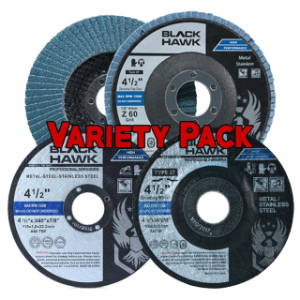
If you are just starting out on a welding and fabrication project, then one option would be the Black Hawk Abrasives Variety pack, which contains five cutting wheels, one grinding wheel, one type 27 (T27) flap disc and one type 29 (T29) flap disc.
All of the discs and wheels have a 4 ½” diameter and can be mounted on smaller angle grinders. Small angle grinders are a great size for welding tasks because they are lighter and more compact resulting in less fatigue and greater ability to grind hard to reach areas. The flap discs are available in 40, 60, 80 and 120 grit. We would recommend purchasing the type 27 in 40 grit and the type 29 in 60 grit. You should also consider supplementing that purchase with additional abrasive fiber discs, flap discs or semi-flexible in 80 and 120 grit sizes for blending.

